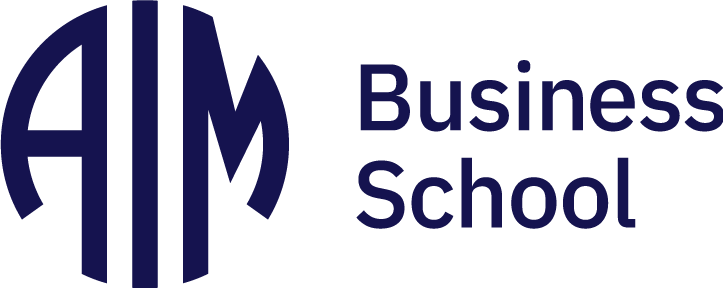Leveraging Cognitive Architecture for Academic Success
Dr Martin Robson, Faculty Lecturer, AIM Business School
Introduction
Having taught MBA subjects to adult students for many years, I have observed that their most significant concern is often academic writing, and how to approach assignments. This is understandable, as many are new to tertiary-level studies or are returning after a long hiatus. In this paper, I argue that students can optimise their academic performance using cognitive architecture. Specifically, early engagement with assignment tasks that allows time for subconscious processing can lead to valuable insights and, consequently, improved academic outcomes.
Opinion about evidence
Academic writing involves a nuanced set of complex skills that can take years to develop. However, for most assignments, the basic expectation is for students to present supported findings concerning the given tasks. Australian universities and institutions advocate using structured academic paragraphs to achieve this objective. Typically, a topic sentence states the finding, followed by supporting sentences that discuss the evidence. Some misinterpret academic writing by saying that students should not offer their opinions. Students should be encouraged to formulate their opinion, however, about the evidence from the course content in relation to what they have seen and heard in their own working life. Students need more time to consider the evidence and form an opinion.
However, managing time for assignments is often a problem for adult students. Many work full-time and may have families and other commitments and priorities. Hence, some students only begin writing their assignments shortly before the due date. This late engagement with the assignment problems undermines their ability to leverage human cognition effectively. Drawing from my research on how organisational leaders form opinions, judgments, and decisions (see, for example, Robson 2006, 2008, 2014, 2015), I contend that this strategy is suboptimal and needs to be revised. Students would be better advantaged if they were to start contemplating assignment tasks and questions in relation to the course content early on, allowing enough time for the student to let the information “roll around in the old brain”. This is because it will take advantage of both cognitive systems to generate insights and thus findings for assignments. The nature and function of these cognitive systems will now be explored in relation to this hypothesis.
Dual Process Theory
According to Dual Process Theory, the experiential system (System 1) is an older, more primitive cognitive system that predates conscious functioning. In contrast, the analytical system (System 2) is more evolved and complex, primarily present in humans. Put simply, System 2 is the voice in your head that can perform maths and deals with logic and evidence. Hence, it is sometimes called the rational cognitive system. By contrast, System 1 is subconscious, deals in affect and intuitions and is experienced as feelings. While System 2 focuses on pieces of information (we can only give attention to one or two things at a time), System 1 is holistic and can deal with complex patterns and much information. While System 2 allows us to articulate conclusions that can be rationally justified, System 1 provides us with feelings of knowing (intuitions) based on experience and pattern recognition. While intuitions are often correct, they may not be able to be justified rationally and articulated. Therefore,
intuitions can be called non-rational cognition (as opposed to irrational cognition). These systems function together to provide the complex experience of being human (see Fig. 1 below).
Figure 1: Experiential and Analytical Cognitive Systems
There are two kinds of intuition discussed in the literature – gut feeling and insight. Whereas gut feeling is based on pattern recognition, insight is able to connect patterns in a new way (Sinclair 2003). Gut feeling is an immediate subconscious recognition of patterns based on experience. For example, you may feel negative or positive about a person upon meeting them. Insight is a sudden new understanding of a problem after researching and thinking about the problem for a sustained time period. After an incubation period, the answer or solution may strike like a bolt of enlightening energy while doing something not related to the issue (like when walking the dog or having a shower). Sometimes just sleeping on a problem can offer clarity or a new perspective.
It can be seen from the above discussion that both manifestations of intuition occur after cognitive effort over extended periods. In the case of gut feelings, the cognitive effort occurs before a problem, often for many years getting to know a domain. Contrarily, insights occur after the presentation of a problem or situation and thinking about it for some time. These descriptions of insight are consistent with the findings of my research of leaders of Australian organisations. For example, leaders told me:
“What happens with me is that I think about things for a protracted period of time, and then I forget about it for a while and then a couple of days later, this new thought that sort of pulls it all together will come into my head”
“I get them all the time (insights), but you gotta do the work. You’ve gotta do your homework”.
Conclusion and recommendation
Despite the time constraints associated with adult student life circumstances, students should be encouraged to embrace the opportunity to exploit cognitive architecture for academic
success. Students can access valuable insights and enhance their problem-solving abilities by consciously engaging with course content in relation to assignment tasks early on and allowing the experiential system time to process information and yield insights. This holistic approach to learning and assignment preparation aligns with the fundamental principles of cognitive functioning and provides a pathway for students to thrive in academia.
References
Robson, M and Miller, P 2006, ‘Australian Elite Leaders, Intuition and Effectiveness’, Australasian Journal of Business and Social Inquiry, Vol 4, no 3, pp. 43-61.
Robson, M and Cooksey, R 2008, ‘Towards the Integration and Contextualisation of Perspectives on Managerial Intuition’, Australasian Journal of Business and Social Inquiry, Vol. 6, no. 3, pp. 62-84.
Robson, M and Cooksey, R 2014, ‘Theorising Intuition in Practice: Developing Grounded Theory with Elite Business Leaders. In M. Sinclair (Ed). A Handbook of Intuition Research Methods, (pp. 219-232), Elgar Publishing, Cheltenham. Retrieved from <http://www.elgaronline.com/view/9781782545989.00027.xml>
Robson, M 2015, ‘Feeling Our Way with Intuition’. In J. Liebowitz (Ed.). Bursting the Big Data Bubble: The Case for Intuition-Based Decision Making, (pp. 21-38), Taylor & Francis, London.
Sinclair, M 2003, The Use of Intuition in Managerial Decision-Making: Determinants and Affective Moderators, PhD Thesis, School of Business, University of Queensland. Retrieved from: <http://espace.uq.edu.au/view/UQ:106258>

